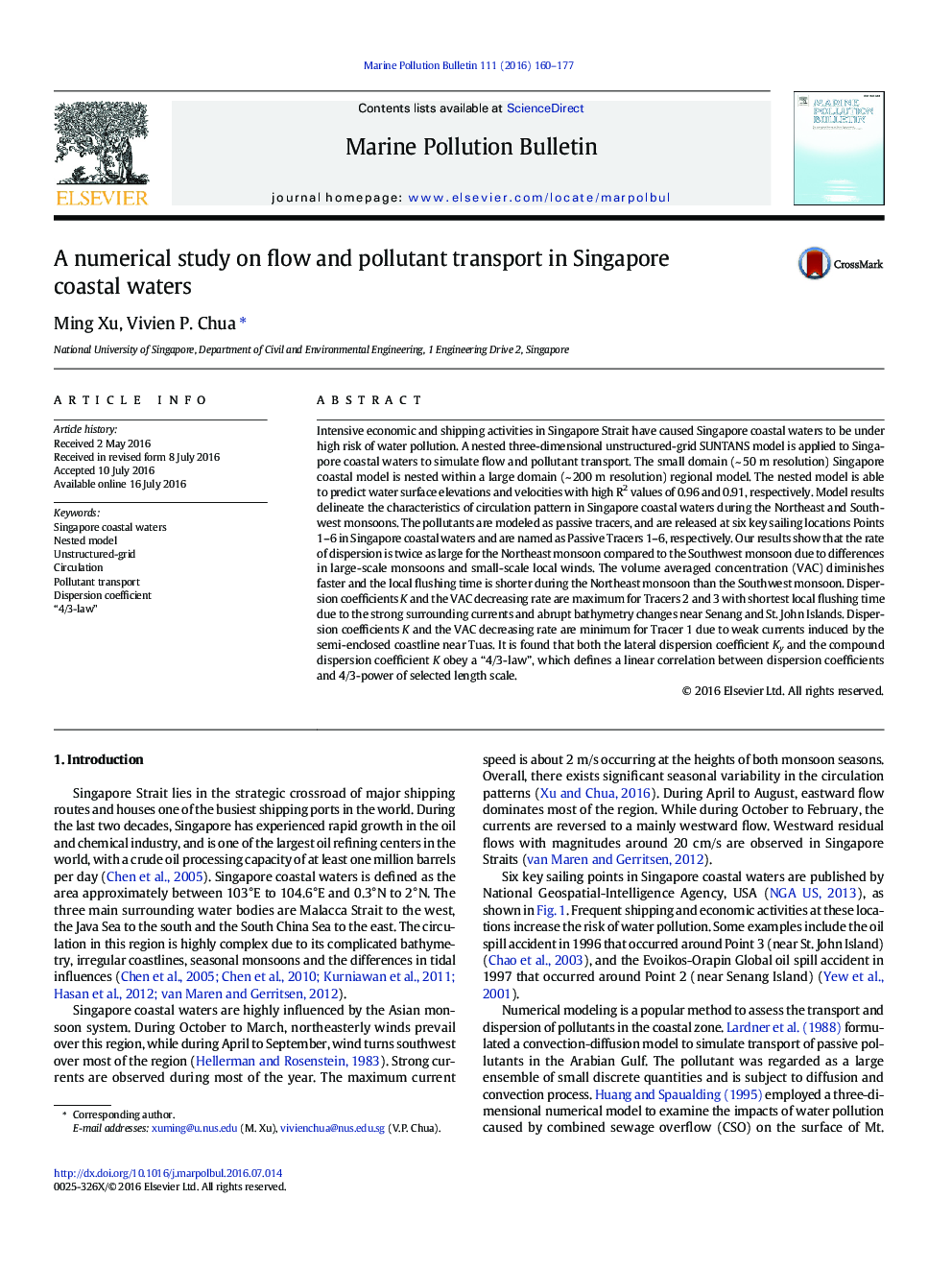| کد مقاله | کد نشریه | سال انتشار | مقاله انگلیسی | نسخه تمام متن |
|---|---|---|---|---|
| 4476302 | 1622724 | 2016 | 18 صفحه PDF | دانلود رایگان |
• A nested three-dimensional unstructured-grid SUNTANS model
• Effects of different locations and monsoon seasons on pollutant transport
• Doubled dispersion coefficients during Northeast monsoon
• Largest dispersion rate near Senang and St. John Islands
• Both the lateral and compound dispersion coefficients Ky and K obey a “4/3-law”.
Intensive economic and shipping activities in Singapore Strait have caused Singapore coastal waters to be under high risk of water pollution. A nested three-dimensional unstructured-grid SUNTANS model is applied to Singapore coastal waters to simulate flow and pollutant transport. The small domain (~ 50 m resolution) Singapore coastal model is nested within a large domain (~ 200 m resolution) regional model. The nested model is able to predict water surface elevations and velocities with high R2 values of 0.96 and 0.91, respectively. Model results delineate the characteristics of circulation pattern in Singapore coastal waters during the Northeast and Southwest monsoons. The pollutants are modeled as passive tracers, and are released at six key sailing locations Points 1–6 in Singapore coastal waters and are named as Passive Tracers 1–6, respectively. Our results show that the rate of dispersion is twice as large for the Northeast monsoon compared to the Southwest monsoon due to differences in large-scale monsoons and small-scale local winds. The volume averaged concentration (VAC) diminishes faster and the local flushing time is shorter during the Northeast monsoon than the Southwest monsoon. Dispersion coefficients K and the VAC decreasing rate are maximum for Tracers 2 and 3 with shortest local flushing time due to the strong surrounding currents and abrupt bathymetry changes near Senang and St. John Islands. Dispersion coefficients K and the VAC decreasing rate are minimum for Tracer 1 due to weak currents induced by the semi-enclosed coastline near Tuas. It is found that both the lateral dispersion coefficient Ky and the compound dispersion coefficient K obey a “4/3-law”, which defines a linear correlation between dispersion coefficients and 4/3-power of selected length scale.
Journal: Marine Pollution Bulletin - Volume 111, Issues 1–2, 15 October 2016, Pages 160–177
